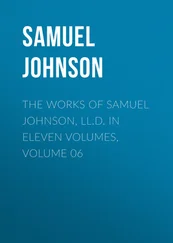Samuel Pepys - Diary of Samuel Pepys - Complete 1660 N.S.
Здесь есть возможность читать онлайн «Samuel Pepys - Diary of Samuel Pepys - Complete 1660 N.S.» — ознакомительный отрывок электронной книги совершенно бесплатно, а после прочтения отрывка купить полную версию. В некоторых случаях можно слушать аудио, скачать через торрент в формате fb2 и присутствует краткое содержание. Жанр: unrecognised, на английском языке. Описание произведения, (предисловие) а так же отзывы посетителей доступны на портале библиотеки ЛибКат.
- Название:Diary of Samuel Pepys - Complete 1660 N.S.
- Автор:
- Жанр:
- Год:неизвестен
- ISBN:нет данных
- Рейтинг книги:4 / 5. Голосов: 1
-
Избранное:Добавить в избранное
- Отзывы:
-
Ваша оценка:
- 80
- 1
- 2
- 3
- 4
- 5
Diary of Samuel Pepys - Complete 1660 N.S.: краткое содержание, описание и аннотация
Предлагаем к чтению аннотацию, описание, краткое содержание или предисловие (зависит от того, что написал сам автор книги «Diary of Samuel Pepys - Complete 1660 N.S.»). Если вы не нашли необходимую информацию о книге — напишите в комментариях, мы постараемся отыскать её.
libreka classics – These are classics of literary history, reissued and made available to a wide audience.
Immerse yourself in well-known and popular titles!
Diary of Samuel Pepys - Complete 1660 N.S. — читать онлайн ознакомительный отрывок
Ниже представлен текст книги, разбитый по страницам. Система сохранения места последней прочитанной страницы, позволяет с удобством читать онлайн бесплатно книгу «Diary of Samuel Pepys - Complete 1660 N.S.», без необходимости каждый раз заново искать на чём Вы остановились. Поставьте закладку, и сможете в любой момент перейти на страницу, на которой закончили чтение.
Интервал:
Закладка:
Pepys's faithful friend, Hewer, was his executor, and his nephew, John Jackson, his heir. Mourning was presented to forty persons, and a large number of rings to relations, godchildren, servants, and friends, also to representatives of the Royal Society, of the Universities of Cambridge and Oxford, of the Admiralty, and of the Navy Office. The bulk of the property was bequeathed to Jackson, but the money which was left was much less than might have been expected, for at the time of Pepys's death there was a balance of L28,007 2s. 1d. due to him from the Crown, and none of this was ever paid. The books and other collections were left to Magdalene College, Cambridge, but Jackson was to have possession of them during his lifetime. These were the most important portion of Pepys's effects, for with them was the manuscript of the immortal Diary. The following are the directions for the disposition of the library, taken from Harl. MS., No. 7301:
The library and the original book-cases were not transferred to Magdalene College until 1724, and there they have been preserved in safety ever since.
A large number of Pepys's manuscripts appear to have remained unnoticed in York Buildings for some years. They never came into Jackson's hands, and were thus lost to Magdalene College. Dr. Rawlinson afterwards obtained them, and they were included in the bequest of his books to the Bodleian Library.
Pepys was partial to having his portrait taken, and he sat to Savill, Hales, Lely, and Kneller. Hales's portrait, painted in 1666, is now in the National Portrait Gallery, and an etching from the original forms the frontispiece to this volume. The portrait by Lely is in the Pepysian Library. Of the three portraits by Kneller, one is in the hall of Magdalene College, another at the Royal Society, and the third was lent to the First Special Exhibition of National Portraits, 1866, by the late Mr. Andrew Pepys Cockerell. Several of the portraits have been engraved, but the most interesting of these are those used by Pepys himself as book-plates. These were both engraved by Robert White, and taken from paintings by Kneller.
The church of St. Olave, Hart Street, is intimately associated with Pepys both in his life and in his death, and for many years the question had been constantly asked by visitors, "Where is Pepys's monument?" On Wednesday, July 5th, 1882, a meeting was held in the vestry of the church, when an influential committee was appointed, upon which all the great institutions with which Pepys was connected were represented by their masters, presidents, or other officers, with the object of taking steps to obtain an adequate memorial of the Diarist. Mr. (now Sir) Alfred Blomfield, architect of the church, presented an appropriate design for a monument, and sufficient subscriptions having been obtained for the purpose, he superintended its erection. On Tuesday afternoon, March 18th, 1884, the monument, which was affixed to the wall of the church where the gallery containing Pepys's pew formerly stood, was unveiled in the presence of a large concourse of visitors. The Earl of Northbrook, First Lord of the Admiralty, consented to unveil the monument, but he was at the last moment prevented by public business from attending. The late Mr. Russell Lowell, then the American Minister, took Lord Northbrook's place, and made a very charming and appreciative speech on the occasion, from which the following passages are extracted:—
In concluding this account of the chief particulars of Pepys's life it may be well to add a few words upon the pronunciation of his name. Various attempts appear to have been made to represent this phonetically. Lord Braybrooke, in quoting the entry of death from St. Olave's Registers, where the spelling is "Peyps," wrote, "This is decisive as to the proper pronunciation of the name." This spelling may show that the name was pronounced as a monosyllable, but it is scarcely conclusive as to anything else, and Lord Braybrooke does not say what he supposes the sound of the vowels to have been. At present there are three pronunciations in use—Peps, which is the most usual; Peeps, which is the received one at Magdalene College, and Peppis, which I learn from Mr. Walter C. Pepys is the one used by other branches of the family. Mr. Pepys has paid particular attention to this point, and in his valuable "Genealogy of the Pepys Family" (1887) he has collected seventeen varieties of spelling of the name, which are as follows, the dates of the documents in which the form appears being attached:
1. Pepis (1273); 2. Pepy (1439); 3. Pypys (1511); 4. Pipes (1511); 5. Peppis (1518); 6. Peppes (1519); 7. Pepes (1520); 8. Peppys (1552); 9. Peaps (1636); 10. Pippis (1639); 11. Peapys (1653); 12. Peps (1655); 13. Pypes (1656); 14. Peypes (1656); 15. Peeps (1679); 16. Peepes (1683); 17. Peyps (1703). Mr. Walter Pepys adds:—
The most probable explanation is that the name in the seventeenth century was either pronounced 'Pips' or 'Papes'; for both the forms 'ea' and 'ey' would represent the latter pronunciation. The general change in the pronunciation of the spelling 'ea' from 'ai' to 'ee' took place in a large number of words at the end of the seventeenth and beginning of the eighteenth-century, and three words at least (yea, break, and great) keep this old pronunciation still. The present Irish pronunciation of English is really the same as the English pronunciation of the seventeenth century, when the most extensive settlement of Englishmen in Ireland took place, and the Irish always pronounce ea like ai (as, He gave him a nate bating—neat beating). Again, the 'ey' of Peyps would rhyme with they and obey. English literature is full of illustrations of the old pronunciation of ea, as in "Hudibras;"
which was then a perfect rhyme. In the "Rape of the Lock" tea (tay) rhymes with obey, and in Cowper's verses on Alexander Selkirk sea rhymes with survey.' It is not likely that the pronunciation of the name was fixed, but there is every reason to suppose that the spellings of Peyps and Peaps were intended to represent the sound Pepes rather than Peeps.
In spite of all the research which has brought to light so many incidents of interest in the life of Samuel Pepys, we cannot but feel how dry these facts are when placed by the side of the living details of the Diary. It is in its pages that the true man is displayed, and it has therefore not been thought necessary here to do more than set down in chronological order such facts as are known of the life outside the Diary. A fuller "appreciation" of the man must be left for some future occasion.
JANUARY 1659-1660
Blessed be God, at the end of the last year I was in very good health, without any sense of my old pain, but upon taking of cold.
I lived in Axe Yard,
having my wife, and servant Jane, and no more in family than us three. My wife.... gave me hopes of her being with child, but on the last day of the year....[the hope was belied.]
[Ed. note:.... are used to denote censored passages]
The condition of the State was thus; viz. the Rump, after being disturbed by my Lord Lambert,
was lately returned to sit again. The officers of the Army all forced to yield. Lawson
lies still in the river, and Monk—[George Monk, born 1608, created Duke of Albemarle, 1660, married Ann Clarges, March, 1654, died January 3rd, 1676.]—is with his army in Scotland. Only my Lord Lambert is not yet come into the Parliament, nor is it expected that he will without being forced to it. The new Common Council of the City do speak very high; and had sent to Monk their sword-bearer, to acquaint him with their desires for a free and full Parliament, which is at present the desires, and the hopes, and expectation of all. Twenty-two of the old secluded members
having been at the House-door the last week to demand entrance, but it was denied them; and it is believed that [neither] they nor the people will be satisfied till the House be filled. My own private condition very handsome, and esteemed rich, but indeed very poor; besides my goods of my house, and my office, which at present is somewhat uncertain. Mr. Downing master of my office.
Читать дальшеИнтервал:
Закладка:
Похожие книги на «Diary of Samuel Pepys - Complete 1660 N.S.»
Представляем Вашему вниманию похожие книги на «Diary of Samuel Pepys - Complete 1660 N.S.» списком для выбора. Мы отобрали схожую по названию и смыслу литературу в надежде предоставить читателям больше вариантов отыскать новые, интересные, ещё непрочитанные произведения.
Обсуждение, отзывы о книге «Diary of Samuel Pepys - Complete 1660 N.S.» и просто собственные мнения читателей. Оставьте ваши комментарии, напишите, что Вы думаете о произведении, его смысле или главных героях. Укажите что конкретно понравилось, а что нет, и почему Вы так считаете.












